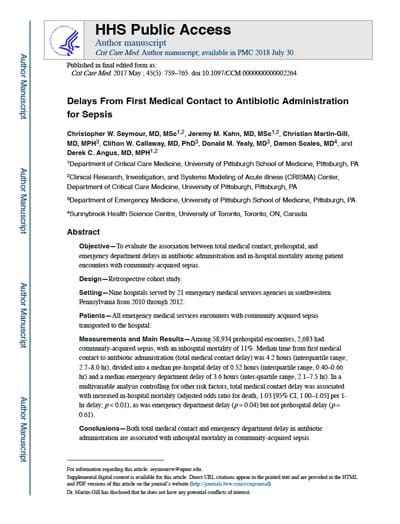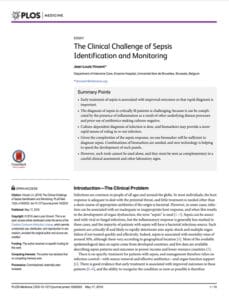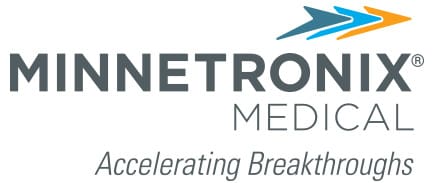Research & Resources
CLINICAL TRIALS
Vail Scientific Feasibility Trial with the University of Minnesota Emergency Department
Patient enrollment criteria:
• 16 patients with suspicion of sepsis
• 16 healthy normal patients
Process:
• Patients had suspicion of sepsis, Nitric Oxide (NO) was measured with a breath analyzer.
• Principal Investigator (PI) confirmed Sepsis 2 reviewing all patient chart data.
Results:
• Statistically significant differences in NO between healthy volunteers and patients (p<0.05).
•All patients confirmed with Sepsis had abnormal NO readings. When nitric oxide readings are coupled by algorithm with other non-invasive measures the performance matched or exceeded SIRS.
Partners:
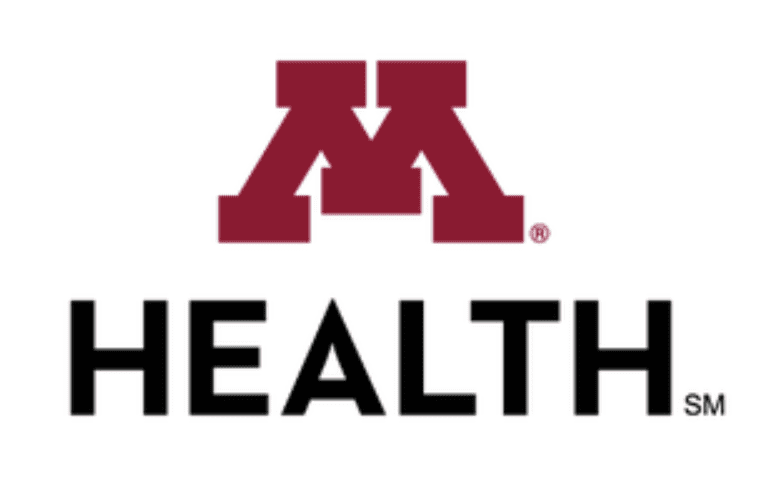
Vail Scientific Proof of Concept Trial with Regions and Methodist Emergency Departments
Patient enrollment criteria:
• 104 Patients with suspicion of sepsis
• 40 healthy normal patients
Process:
• Patients had suspicion of sepsis, Nitric Oxide (NO) was measured with a breath analyzer.
• PI’s confirmed Sepsis 2 reviewing all patient chart data.
Results:
• Significant improvement shown in infection detection sensitivity when the NO score is combined with other non-invasive measurements.
• Significant improvement shown in sepsis detection sensitivity when NO is added to to the current non-invasive triage tests.
• The sensitivity and Negative Predictive Value (NPV) met published recommendations for high-risk medical condition biomarker tests.
Partners:


KEY RESEARCH
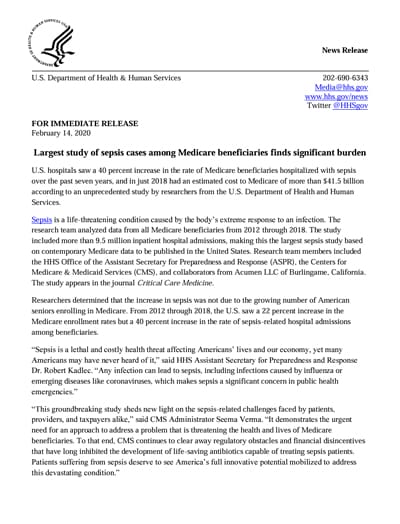

Largest Study of Sepsis Cases Among Medicare Beneficiaries Finds Significant Burden
U.S. Department of Health & Human Services, February 14, 2020
U.S. hospitals saw a 40 percent increase in the rate of Medicare beneficiaries hospitalized with sepsis over the past seven years, and in just 2018 had an estimated cost to Medicare of more than $41.5 billion according to an unprecedented study by researchers from the U.S. Department of Health and Human Services…
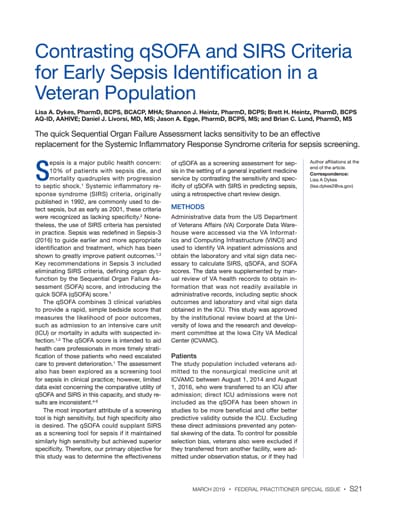

Contrasting qSOFA and SIRS Criteria for Early Sepsis Identification in a Veteran Population
Lisa A. Dykes, et.al., Federal Practioner. 2019 Mar; 36(Suppl 2): S21–S24.
Abstract: The quick Sequential Organ Failure Assessment lacks sensitivity to be an effective replacement for the Systemic Inflammatory Response Syndrome criteria for sepsis screening…
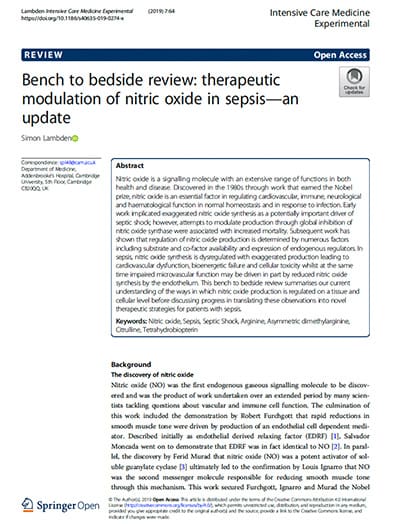

Bench to bedside review: therapeutic modulation of nitric oxide in sepsis-an update
Simon Lambden, Intensive Care Med Exp. 2019 Dec 2;7(1):64.
Abstract: This bench to bedside review summarises our current understanding of the ways in which nitric oxide production is regulated on a tissue and cellular level before discussing progress in translating these observations into novel therapeutic strategies for patients with sepsis.
Diagnosis and management of Sepsis
Clinical Medicine (Lond). 2018 Apr; 18(2): 146–149.
Abstract: Sepsis is a common condition with high morbidity and mortality. Although many patients may require critical care, this article considers the features of sepsis that are of most relevance to acute general physicians. Recently updated definitions of sepsis and septic shock have been proposed which better identify patients who are likely to have a poor outcome, and therefore give an opportunity to escalate care.
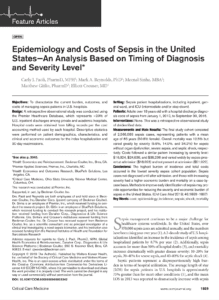

Epidemiology and Costs of Sepsis in the United States—An Analysis Based on Timing of Diagnosis and Severity Level*
Critical Care Med. 2018 Dec; 46(12): 1889–1897. Published online 2018 Nov 16.
Summary Conclusions: The highest burden of incidence and total costs occurred in the lowest severity sepsis cohort population. Sepsis cases not diagnosed until after admission, and those with increasing severity had a higher economic burden and mortality on a case-by-case basis. Methods to improve early identification of sepsis may provide opportunities for reducing the severity and economic burden of sepsis in the United States.
Delays From First Medical Contact to Antibiotic Administration for Sepsis
Seymour et al., Critical Care (2017) 45(5): 759–765.
Conclusions: Both total medical contact and emergency department delay in antibiotic administration are associated with in-hospital mortality in community-acquired sepsis.
Markers of nitric oxide are associated with sepsis severity: an observational study
Winkler et al., Critical Care (2017) 21:189
Conclusions: In patients with sepsis, plasma hArg concentrations are decreased and ADMA concentrations are increased. Both metabolites affect NO metabolism and our findings suggest reduced NO bioavailability in sepsis. In addition, reduced expression of DDAH2 in immune cells was observed and may not only contribute to blunted NO signaling but also to subsequent impaired pathogen defense.
Diagnosing sepsis is subjective and highly variable: a survey of intensivists using case vignettes
Rhee et al., Critical Care. 2016 Apr 6:20:89. doi: 10.1186/s13054-016-1266-9.
The Clinical Challenge of Sepsis Identification and Monitoring
PLoS Med (2016) 13(5): e1002022.
Summary: Early treatment of sepsis is associated with improved outcomes so that rapid diagnosis is important. The diagnosis of sepsis in critically ill patients is challenging, because it can be complicated by the presence of inflammation as a result of other underlying disease processes and prior use of antibiotics making cultures negative. Culture-dependent diagnosis of infection is slow, and biomarkers may provide a more rapid means of ruling in or out infection. Given the complexities of the sepsis response, no one biomarker will be sufficient to diagnose sepsis…
ORGANIZATIONS & AFFILIATIONS
Minnetronix Medical
Founded in 1996, Minnetronix is a contract design, development, and manufacturing partner that accelerates medical device breakthroughs at every stage of the product lifecycle. Minnetronix supports long-term, scalable manufacturing, and with over 150 degreed engineers and scientists working out of a single-site campus in St. Paul, MN, they have the industry expertise and technical acumen to deliver medical devices to market, faster.
minnetronixmedical.com


Medical Alley
As the world’s foremost network of healthcare organizations, we have an unrivaled ability to create transformation in the health ecosystem.
medicalalley.org
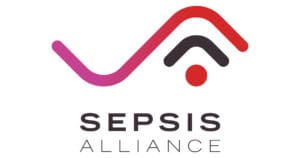

Sepsis Alliance
Sepsis Alliance is the leading sepsis organization in the U.S. working in all 50 states to save lives and reduce suffering from sepsis.
sepsis.org


End Sepsis
END SEPSIS is the leading sepsis advocacy organization in the United States. It was founded in 2012 by Ciaran and Orlaith Staunton following the undiagnosed, untreated, and preventable death of their 12-year-old son Rory from sepsis.
endsepsis.org


Global Sepsis Alliance
The GSA is a non-profit charity organization with the mission to provide global leadership to reduce the worldwide burden of sepsis. The GSA is the initiator of World Sepsis Day on September 13 and World Sepsis Congress,
globalsepsisalliance.org
